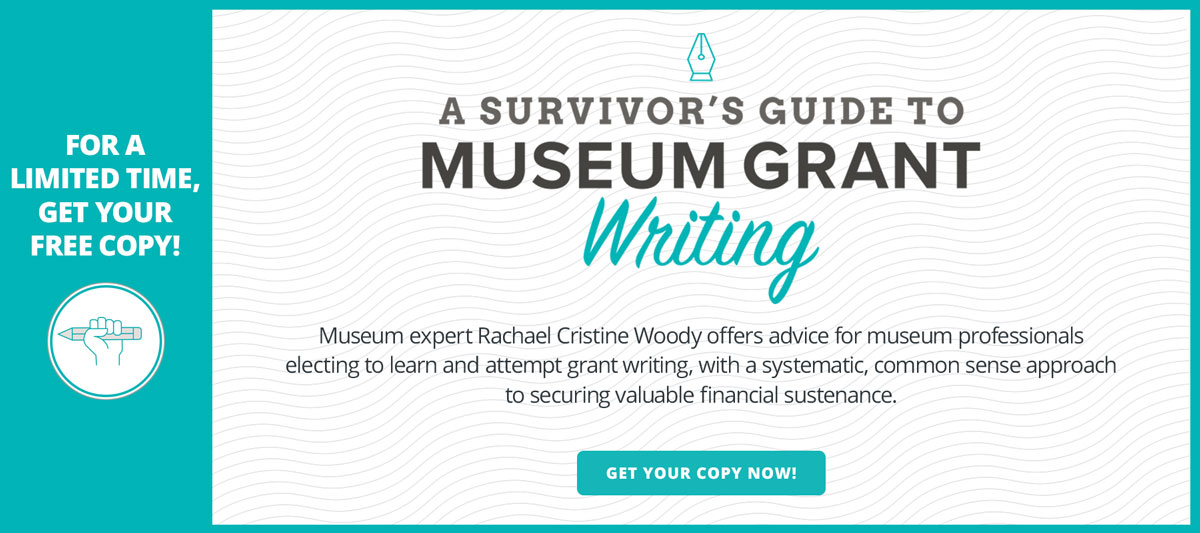Creating a Museum Grant Writing Roadmap for 2019

Rachael Cristine Woody
The fallow months of winter are usually the best time for museums to perform museum grant writing and planning. Many funding agencies have refreshed their grant requirements and deadlines for the upcoming year, and many of the grant applications usually aren’t due until early Spring through to the end of Summer.
If your museum has completed the foundational work required to get into grants, and you have a few grant projects constructed with appropriate funding opportunities identified, you’re ready to prioritize your grant projects and schedule in time for application.
If you’ve read my do’s and don’ts you’re aware that museums shouldn’t shop the same grant project idea to multiple funding agencies at the same time. You will also have read that you shouldn’t have multiple (large) grant projects running concurrently. However, I do encourage you to purposefully prioritize and schedule grant projects in a way that will set you up for success.
Here are 3 timing factors to consider when prioritizing museum grant writing projects for the year:
- Does the grant project have to occur at a designated time?
- Is the grant project dependent upon the timing of other projects?
- Does the application due date and award distribution date work for the museum’s intended grant project?
Once the timing details have been evaluated, the next step is prioritization. If multiple grant project ideas have been put forth, it’s important to prioritize them and only select a number of ideas that will fit museum staff capabilities. This can be a difficult process because many of the grant project ideas that have made it to this point are worthy of being considered.
Here are my top 5 questions to consider when prioritizing grant project ideas:
- Which grant project ideas are most in-line with supporting the museum’s mission and strategic plan?
- Which grant project ideas will have the greatest community or stakeholder impact?
- Which grant project ideas have the potential to live on after the grant phase is over?
- Which grant project ideas will aid in cost efficiencies for the museum?
- Which grant project ideas will garner the best ROI (return on investment)?
You’ll notice that the questions are focused on the long-term or perpetual benefits of the grant project idea living beyond the project lifespan. While there is certainly a place for grant projects that are contained—with only short-term benefits—grant projects that are of greater value are ones that will leave a lasting, positive effect. Grant projects with the museum’s long-term benefit in mind should be prioritized since they contribute additional value.
Museum grant application planning
Once the timing of the grant projects has been evaluated and they’ve been prioritized, the museum is ready to create its grant roadmap for the year. For the grant projects selected, assign a team composed of all individuals who will be working on the museum grant writing, application and (if awarded) project. Have each team break down the grant application requirements including eligibility and submission guidelines. Each grant application is different and many of the large funding agencies have a complicated submission system with strict adherence to what they require. Each team should begin this work at least 6 weeks prior to the application deadline or, preferably, up to 3 months prior to deadline. Have the team construct a list of required elements: documentation, project narrative, budget, supplemental information, etc., and assign team members to each. With the deadline in mind, subtract 2 weeks to arrive at a desired “final draft” due date. Then identify who needs to review and approve the application rough draft and how long they need to arrive at “rough draft” due date. With the time remaining (the date the team assigns application elements to the rough draft due date) determine when each element should be due to the group for review and incorporation.
Successfully acquiring museum grants takes planning and attention to detail. By evaluating and prioritizing grant project ideas you can be more intentional with staff resources—and create a sustainable roadmap to grant application for 2019 and beyond!

Rachael Cristine Woody
Rachael Cristine Woody has advised on museum collections management, budgeting and grant writing for institutions like the Freer|Sackler Museum of the Smithsonian Institution and the Oregon Wine History Archive at Linfield College. See Rachael’s posts for Lucidea here.
Similar Posts
No-Code Digital Storytelling Example: Rembrandt’s Self-Portrait at Kenwood House
Explore how English Heritage’s Kenwood House uses the no-code platform Shorthand to bring Rembrandt’s Self-Portrait with Two Circles to life through visual storytelling and interactive design.
Exploring No-Code Digital Storytelling: Hoover’s “Fanning the Flames” Exhibit
Explore no-code digital storytelling with Hoover’s ‘Fanning the Flames’ exhibit. See how interactive tools (Deep Zoom Color Compare & Hot Spot) enhance user engagement and the visual experience.
An Introduction to Scrollytelling for Museums
Discover how museums use scrollytelling and digital storytelling platforms to create immersive narratives. This introduction explores key concepts and approaches to interactive storytelling.
Exploring Self-Determinate Multiple Pathways: An Example of Digital Storytelling
Discover how self-determinate multiple pathways offer flexible interactive storytelling in museum exhibits. Learn from the Tenement Museum’s ‘Your Story Our Story.’







Leave a Comment
Comments are reviewed and must adhere to our comments policy.
0 Comments